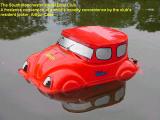More RC Plastic- Pat's USS Nimitz CVN 68

A serious Nimitz? No sir! Perhaps I've taken r/c plastic too far. R/C Plastic is my concept of "easy access" r/c ship modeling wherein relatively low cost and low effort modeling is achieved with the use of larger scale plastic models, instead of laborious fiberglass and scratch built models. Perhaps I've been inspired by novelty r/c conversions, such as this motorized kid's potty trainer from Manchester:
Or perhaps I'm just slumming.
But I found this 31 inch toy Nimitz at Target for a mere $15, including a box-load of die cast planes. The model comes from Redbox in China, and seems to be all styrene, with some reasonable attempt to include features from the real ship. The construction hints at some options not built into my version, like a box set into the deck with battery holder but no other contents... probably intended to be a sound device. But it does include flip-up blast deflectors at the catapults, an elevator that can be cranked up and down, and a deck access panel to a storage area for the toy planes. It also features an enclosed hull of admirable beam and draft, with no gaping holes for wheels or such. The hull even has skegs for two potential prop shafts, and a center skeg forward of the potential rudder site. The deck is attached with a bunch of screws from under the hull, but all of the bosses for the screws are set above the expected waterline... how convenient, I thought with a wry smile.
Wasting no time, I secured a pair of Kyosho 34mm props, some brass rod and tube for the stuffing boxes, some Dumas shaft couplings, and a pair of Radio Shack 12v toy motors. Having a 7.2v NiCd pack, radio, and home made ESC on hand, I completed the electronics kit.
My Dremel tool opened holes in the hull for the stuffing boxes, which were then sealed in place with Goo. I had to do some lathe work to make adaptors to connect props to shafts, and Dumas couplings to the motors. I wasted no time on motor mounts, the motors are Goo'd directly to the hull. The rudder is built up from brass bits, and the rudder post is set into some bits of styrene glued in the hull.
I had previously done a float test in the bathtub, and found that I needed about 5.5 lbs to reach the waterline. This required a bit of added ballast, a chunk of steel aft and some lead shot forward (don't forget to allow for the weight of the planes!).
Of the ten planes in this set, five are Navy, the rest Air Force and Army. I pinned and glued the naval aircraft (and the YF-22 for fun) to suitable spots on deck.
The bare gray plastic and colorful deck markings were left as-is, but the hull bottom was improved with a coat of red.
I trotted down to the lake for sea trials. Was a beautiful day, and I found a ready and able volunteer at the beach to work the radio while I filled up my camera with official builder's photos:

The completed model
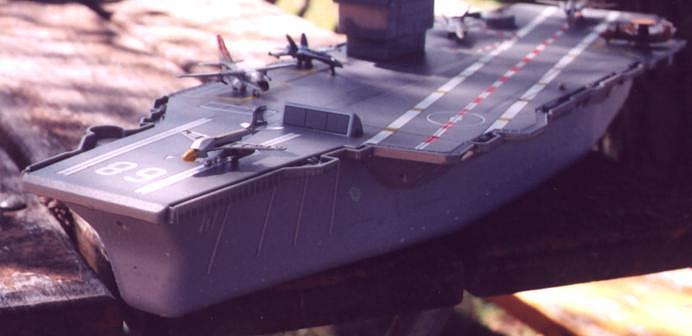
The square bow- the reason for the huge bow wave. Even with this impediment, the boat moves along smartly.
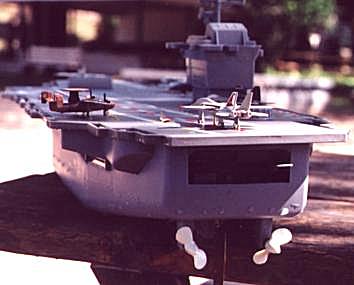
Kyosho props
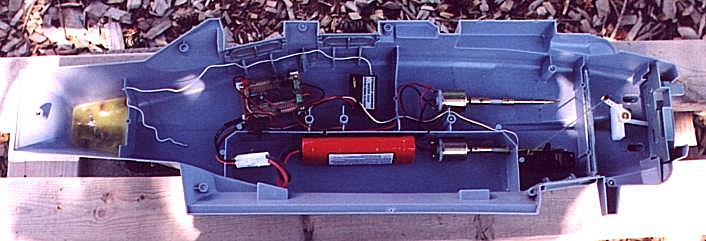
Internal arrangement. Lots of ribs inside, into which I cut slots for various wires.
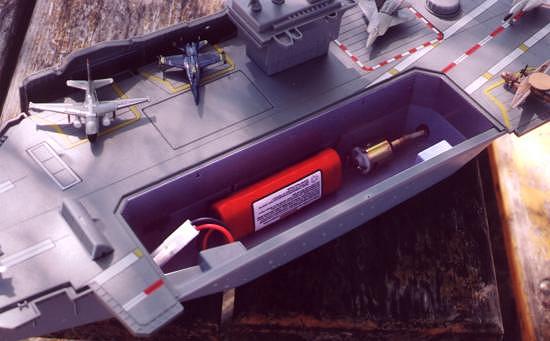
Stowage compartment. Easy access to the battery and power switch.
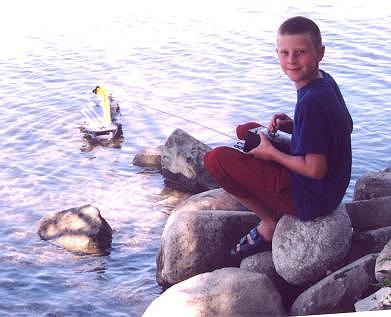
Volunteer test pilot.
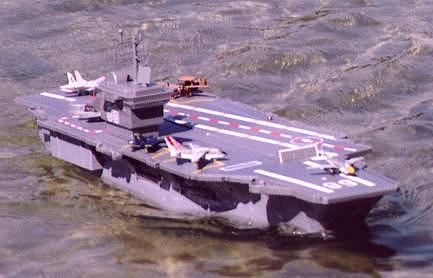
Underway

Huge bow wave
back to Pat's Pages
